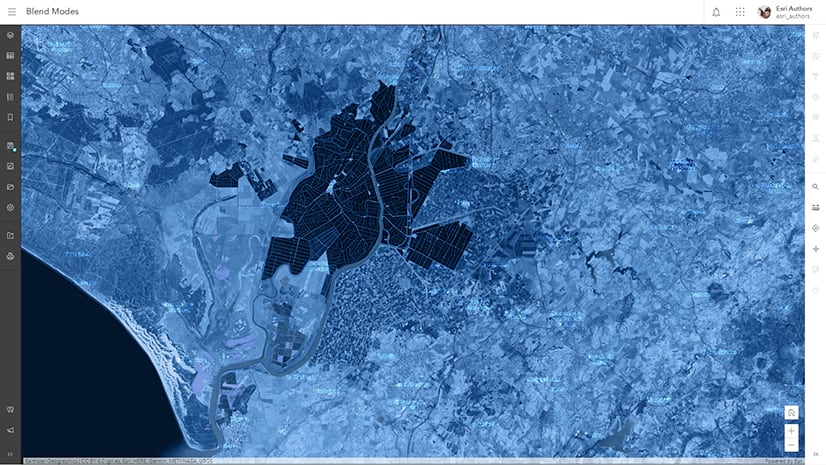Report:
Every year, organizations like yours trust Esri with investments in the Esri Maintenance Program. This includes our users with enterprise agreements, as your agreements automatically mean you are included in the Esri Maintenance Program. We value your trust, and strive to ensure you realize a strong return on your investment through access to leading-edge technologies and high-quality support services. Esri proudly works toward this by reinvesting nearly one-third of our annual revenue, about twice what the average public company spends, into continued research and development to deliver ArcGIS updates on your behalf.
The results of these R&D investments have traditionally been communicated through a variety of media. This approach, while offering timely updates, has made it difficult for customers to get a holistic picture of where their investment in maintenance is being used. As Program Manager, I want to ensure transparency and clarity for our users—and it is with this goal in mind that I write our inaugural Esri Maintenance Program Report. This issue focuses on software updates and security. Users who are subscribed to updates from the Esri Maintenance Program should also be receiving upcoming reports from their other program benefit areas: powerful e-learning, world-class technical support, rich cloud services, comprehensive compatibility testing, and community forums. We hope you find these reports useful and that this information helps you take advantage of all the benefits available through active maintenance or your enterprise agreement.
Overview:
This summer marked the ArcGIS 10.8.1 platform release, ArcGIS Pro 2.6 release, ArcGIS Online Summer 2020 release, and a myriad of version releases for our application programmer interfaces (APIs) and software development kits (SDKs). Each release brought exciting functionality and quality improvements. Highlights for some of my favorite updates for each of the five main platform areas are below.
Curious about what’s new in this month’s release for a specific ArcGIS component you use? More details are available on individual products, as well as the above highlights, under the What’s New category of the ArcGIS Blog. For a condensed summary version of products, check out our release announcement summaries for Q3 2020, Q1 2020, and Q2 2019.
TL;DR: We’re continuing to aggressively direct your maintenance investments into the functionality we believe you need now and next, while keeping an eye on quality, interoperability, and security. As a user with active maintenance, you can count on us.
Software Updates:
Desktop GIS
Desktop GIS continues to grow rapidly due to increased recognition of GIS professionals (GISPs) from decision-makers. Valued as individuals who can quickly and accurately transform big data into actionable knowledge for their organizations, GISPs are central to our user base—and their core desktop GIS tools, ArcMap and ArcGIS Pro, remain an important focus area for us in the Esri Maintenance Program.
The 10.8.1 release of ArcMap continues to improve quality, addressing six performance issues reported by our users. With a focus on ensuring ArcMap’s continued reliability, the primary intent is to ensure its stability on new operating systems (more about that in an upcoming blog on compatibility testing). As with the past few releases, there are no new enhancements to report in the ArcMap 10.8.1 release.
Next is ArcGIS Pro 2.6. Many of you know the ArcGIS Pro 2.5 release delivered 104 performance issue improvements, and an additional 80 new tools and enhancements requested by our users from the ArcGIS Ideas site. ArcGIS Pro 2.6, not to be outdone, likewise delivers an additional 97 performance issue improvements and 130 new tools and enhancements. Some of my favorite features include integrated Python notebooks called ArcGIS Notebooks, scheduled geoprocessing, faster geoprocessing with spatial database queries, big data connections that enable you to aggregate multiple datasets easily for pre-analysis preparation, Count Overlapping Features, Generate Origin-Destination (OD) Links, time series forecasting, new ‘voxel’ volumetric 3D analysis, and Suitability Modeler. Additionally, the ArcGIS Pro 2.6 release introduces expanded deep learning capabilities with imagery, better support for motion imagery, and a deep learning installer.
In addition to innovation, we know your maintenance investment comes with an expectation of continued and ever-improving interoperability. Esri’s Commitment to Open continues, and ArcGIS Pro 2.6 introduced Open Geospatial Consortium (OGC) geopackage editing, an update to the OGC Integrated 3D Scene (I3S) standard to now support point clouds, and ISO metadata enhancements. Part of the reason we’re able to deliver such a high volume of enhancements to you with each release is due to the new streamlined codebase within ArcGIS Pro. Based on the feedback we received in your pre-Esri User Conference (Esri UC) surveys, I hope you will appreciate the dual commitment to quality improvement and advancement in capabilities.
With questions from this year’s Esri UC top of mind, I must underscore that any perpetual ArcMap user whose maintenance has been current any time since its initial release in 2015 automatically received ArcGIS Pro at no extra cost through the Esri Maintenance Program. Our activation statistics show the overwhelming majority of our users globally have activated ArcGIS Pro to date, but it is not too late to do so via My Esri or ArcGIS Online if you haven’t already. Don’t forget about the e-learning we’ve made available via the Esri Academy to help you leverage your new desktop tool, including a course to familiarize you with the ArcGIS Pro interface, and a course to practice your workflows in the new environment.
Last but not least, ArcGIS CityEngine, geodatabase enhancements, ArcGIS Earth, and ArcGIS Drone2Map continue to make exciting advancements. This summer’s ArcGIS CityEngine release introduced integration with ArcGIS Urban, which is experiencing rapid adoption in the state and local government community. It also introduced additional procedural enhancements and export options. ArcGIS Earth also recently added function for KML editing, support for OGC WFS, and developer options. Meanwhile, ArcGIS Drone2Map added orthomosaic editing tools in its latest release, along with ground control enhancements and control camera optimization.
Geospatial Cloud
GIS technology’s evolution from specialized use to standard use across hundreds of sectors coincides with another rapid advancement: cloud technology. Coupling these two powerful technologies brings reliable, scalable, ready-to-use web GIS to your fingertips, anytime, anywhere. ArcGIS Online, Esri’s Software-as-a-Service (SaaS) GIS, is included with your desktop platforms that are current on maintenance.
We are proud to see so many of our users around the world leveraging ArcGIS Online for their COVID-19 crisis lifecycle management. At the peak of the COVID-19 pandemic, ArcGIS Online serviced 11.7 billion global requests in a single day. Thanks to the scalability enhancements we’ve made, the Esri geospatial cloud rose to meet your needs. We continue to work aggressively on performance and feature enhancements for you.
The June ArcGIS Online update included 34 user-submitted ideas/enhancements for the new Map Viewer, and 17 additional ideas/enhancements for the ArcGIS Online core. Some of my favorites include the ability to show attachments in pop-ups, support for new projections, and the heavily requested support for group layers. Other exciting enhancements include the ability to visualize scientific globes, store and visualize lidar point clouds, and replace layers (vector tile, raster tile, and scene layer types), plus additional capabilities to append and generate indices for updating data and the introduction of information banners for displaying terms of use, warnings, and privacy notifications. In addition to these, ArcGIS Notebooks are now also available in ArcGIS Online in general availability. With ArcGIS Notebooks, every ArcGIS Online organization can create hosted Python notebooks using a built-in Jupyter notebook environment, enabling SaaS spatial data science and automation of Web GIS administration.
Meanwhile, many of our premium applications that run in the geospatial cloud also experienced exciting updates. ArcGIS Insights added new chart types, including percent bar and point charts, as well as SQL Server database authentication support, and connections to Microsoft OneDrive and SharePoint. ArcGIS Business Analyst Web App added batch infographics, in addition to void and gap analysis for users. Finally, we are pleased to welcome the recent acquisition of 3DR and Site Scan for ArcGIS to the Esri family. We are excited that our users can now manage UAS flights, as well as perform post-processing as part of our SaaS offerings.
Moreover, your built-in apps, including ArcGIS Experience Builder, introduced the very popular GeoCard functionality, which gives users the ability to have a spatially informed interface that is not map-centric but is constantly up to date for information consumers. ArcGIS StoryMaps enhanced express maps making it even easier for everyone to create maps on-the-fly. With new capabilities added to collections, you can better present and group commonly themed stories, apps, and files. ArcGIS Dashboards introduced new summary statistics, as well as better support for number and date formatting.
Finally, we are in the process of continuing to add capabilities to Esri Geospatial Cloud offerings, including ArcGIS Analytics for IoT, which gives users real-time tracking without having to run their own ArcGIS GeoEvent Server. Additionally, ArcGIS Urban, ArcGIS Indoors, and ArcGIS Image Server continue to have their capabilities integrated into ArcGIS Online for Esri-managed ease of use. Moreover, ArcGIS Hub continues to add new features and capabilities that help governments and organizations of all types and sizes to collaborate more effectively, and create modern, inviting web destinations that serve as a central hub for information and communication.
We know SaaS or operating in a hybrid environment is a growing preference for many of you, and we are continuing to direct part of your maintenance investments toward building out this area.
Developer Tools
Developers represent an increasingly large portion of Esri’s user base due to the number of tools we’ve released to support them. While our developer offerings are mainly subscription-based, they are still part of the Esri Maintenance Program, and an important area of focus for us.
This summer’s release includes continued performance improvements to the ArcGIS API for JavaScript, especially when drawing large numbers of features. It also includes layer blending, removes Dojo to move to Typescript modern developer tooling, and adds support for our upcoming game engine work.
The release also features the announcement of our upcoming ArcGIS SDKs for the Unity and Unreal gaming engines—which will be important for future augmented reality additions to mobile GIS workflows. Updates to the native ArcGIS Runtime SDKs include support for online/connected interaction with the new utility network and navigation inside the runtimes. Finally, ArcGIS Enterprise SDK had a big release with support for Utility Network datasets in Server Object Extensions (SOEs) and Server Object Interfaces (SOIs), the ability to build image service SOIs, use of shared instances for SOEs and SOIs, as well as integration with Maven for Java SOE and SOI development.
Enterprise Server GIS
Enterprise GIS continues to empower organizations to ask bigger questions and apply GIS in new areas. This summer’s 10.8.1 platform release includes ArcGIS Experience Builder and the next generation of ArcGIS StoryMaps. Likewise, we’ve seen great enhancements to ArcGIS Enterprise Sites, including site cloning and site-specific admins to facilitate decentralization administration to appropriate stakeholders.
Additional enhancements for IT and GIS administration include a read-only mode to prepare for updates, as well as Portal-tier email integration with your SMTP servers, which allow automatic emails for notice ahead of license expiration. Also, the much-anticipated ability to extract and move content between development, staging, and production joins us at the 10.8.1 release. We know innovation is only one of the reasons you invest in the Esri Maintenance Program, and we are committed to delivering you time-saving tools as well.
Map Viewer Beta is also now available as an additional install for ArcGIS Enterprise at 10.8.1. This is especially important given the number of enhanced capabilities, traditionally only available in ArcGIS Pro, that are now available to users via Map Viewer Beta thanks to enhancements to ArcGIS Image Server at 10.8.1. I would of course be remiss if I didn’t mention the inclusion of the vector tile style editor in ArcGIS Enterprise as well. For those who haven’t taken a look at vector tiles for basemaps, I would strongly encourage you to do this, as they will save you significant space on your mobile devices for offline workflows.
Starting in 10.8.1, notebook authors leveraging ArcGIS Notebook Server can schedule tasks for automated execution at a fixed time in the future. Scheduling tasks enables you to automate routine workflows, run data-intensive processes during off-peak hours, and regularly update datasets and information products.
In addition to core ArcGIS Enterprise, the 10.8.1 platform release was potentially the most exciting for the ArcGIS Workflow Manager extension. ArcGIS Workflow Manager at the server tier launched its new overhauled codebase with 10.8.1. From this, users will enjoy much easier setup; streamlined assignment of activities; automation; and better tracking of submissions, approvals, and editing. What’s more, the 10.8.1 release of ArcGIS Workflow Manager recognizes that work is no longer just a place, and adds a mobile companion app!
ArcGIS Workflow Manager wasn’t the only server-tier extension that received exciting new functionality at the 10.8.1 release. ArcGIS GeoEvent Server gained a new, single monitoring page for controlling inputs, outputs, and services, replacing multiple pages of controls. The new UI significantly enhances usability. Expanded and restructured documentation serves up best practices for deployment, system architecture, machine resource allocation, and more. See the latest here.
Mobile GIS
With contactless collaboration becoming necessary due to COVID-19, mobile GIS apps have become critical to connect field staff with administrative staff. With this in mind, the Esri Maintenance Program has kept our mobile apps toward the top of our priorities.
This summer’s release includes support for public key infrastructure (PKI) sign-on in ArcGIS Explorer; support for offline workflows and Tracker tracks in ArcGIS Workforce; barcode scanning, PDF attachments, and feature snapping in ArcGIS Collector; and support for Apple Watches in ArcGIS Tracker. This summer also marked the release of ArcGIS Mission, our peer-to-peer mobile team application.
ArcGIS Solutions
In addition to new software capabilities, the Esri Maintenance Program is continuing to emphasize support for templates within the software. ArcGIS Solutions are freely available to all users to help them solve common business problems using integrated workflows with focused maps. Esri is also increasingly working to host the solution templates inside ArcGIS Online to ease their deployment. This summer’s release includes 15 new solution templates and major updates to 18 others. Beyond these 32 templates, Esri’s solutions teams have released a bevy of ArcGIS Solutions templates around COVID-19 and Racial Equity to help communities fight the pandemic and inequities in their communities.
Roadmap
As a private company that develops based on our users’ needs, we’re continuing to work to solve your problems of today with an eye on the problems of tomorrow. Globally, the locust destruction consuming much of East Africa, Europe, the Middle East, and now increasingly South Asia continues to spread. With many economies having a significant agricultural staple as a component of their overall livelihood, the locusts and associated food shortages are top of mind for our customers around the world. Other persistent threats including COVID-19, weather-related hazards, and supply chain disruptions continue to guide our development of capabilities to help you solve current and future problems.
The Esri Maintenance Program’s upcoming community newsletter will include a link to the virtual 2020 Esri User Conference proceedings, including the sessions on the road ahead for GIS. To summarize at a platform level, in the coming six months between now and the ArcGIS 2021 release, Esri intends to focus investment of your maintenance dollars into the various product areas discussed here. Some highlights I’d like to mention include:
- ArcGIS StoryMaps will offer beautiful and modern image galleries, the option to create your own custom theme, and more. These features will make your stories stand out while also incorporating your branding.
- The ArcGIS Field Maps app will have its first release and refinements to combine ArcGIS Explorer, ArcGIS Collector, and ArcGIS Tracker into one app for users, which will significantly improve user experience and reduce on-device storage requirements for offline workflows. In 2021, ArcGIS Workforce and ArcGIS Navigator will be incorporated into ArcGIS Field Maps.
- Additional support for the OGC APIs will accompany the 2021.0 release, as well as more support for ISO metadata in ArcGIS Online and ArcGIS Enterprise.
- An additional 20 new ArcGIS Solutions templates are expected with the ArcGIS 2021.0 release this winter, in addition to updates to the current templates.
- Integration between ArcGIS Insights and Microsoft Teams is underway, as well as support for Snowflake data warehouses.
Security:
Cyber threats have evolved beyond sophisticated nation-states to now also include skilled individuals with malicious intent. Organizations are being attacked by bad actors hoping to steal intellectual property, extract ransoms, or cause social disruption. It is top of mind for us here at Esri, as we know our commitment to security is one of the reasons you choose ArcGIS. Security is potentially one of the most important areas into which your maintenance is reinvested. Leading the charge on that reinvestment focus is our Chief Security Officer for ArcGIS, Michael Young. Below, he summarizes some updates from the past year:
“Over the last year, Esri has continued to advance the security capabilities embedded within our products as well as associated tools and guidance to ensure your information is as secure as possible.
Some initiatives are broadly announced, such as forcing ArcGIS Online to only utilize TLS 1.2 last year and ensuring all ArcGIS platform components could support the most secure, current, and widely utilized standards. This year, another broadly announced event is the enforcement of HTTPS and HSTS in December. These types of changes require validation by our customers before the change is implemented by Esri to ensure a smooth transition to the stronger security posture of our services.
Over the past few releases, Esri has also focused on hardening ArcGIS Enterprise, making administrative privileges more restrictive. At 10.7.1, the sharing API within the Enterprise portal was hardened. At 10.8, the portal’s administrative API was hardened. At 10.8.1, ArcGIS Server’s administrative API was hardened. Hardening efforts will continue post-10.8.1. The importance of staying current with both releases and security patches cannot be emphasized enough: be aware that while security patches address vulnerabilities for older releases, they frequently do not incorporate many security advancements that are available only in newer releases such as the ones stated above.
We recognize that checking if your ArcGIS implementation is in alignment with security best practices needs to be easy and fast to encourage regular validation. If you have not utilized the ArcGIS Security Advisor lately, you might want to check it out as it can quickly provide guidance for:
- ArcGIS Online Organization or ArcGIS Enterprise
- Organization settings not following best practices
- Flag HTTP references to be updated before HTTPS-Only enforcement date
- Flag public Survey123 surveys not following best practices
- Awareness of all organization items shared publicly
- Awareness of ArcGIS Enterprise Utility Services sending data to external systems
The Security Advisor is just one click away (no install) within the ArcGIS Trust Center. For those unfamiliar, you can stay on top of the latest security patches or trends relative to the ArcGIS platform by subscribing to the Announcements RSS feed on the home page. Additionally, the documents section of the Trust Center continues to expand with new and updated content, including Esri’s first authoritative paper on privacy (starting with ArcGIS Location Tracking), a major refresh of the Secure Mobile Implementation paper, a UC presentation video for Preparing for the ArcGIS Online HTTPS-Only Transition, and much more!
Cybersecurity continues to be a very rough road for an increasing number of organizations around the globe and we are here to make the road smoother when utilizing the ArcGIS platform. Keep an eye out for more significant privacy and security advancement announcements over the next several months and feel free to contact the Esri team at SoftwareSecurity@Esri.com.”
Closing:
Your Esri Maintenance Program team is constantly working to deliver results to you as our users. Despite the pandemic, we continue to reinvest maintenance and enterprise agreement dollars strategically in evolving your software, and expect the ArcGIS 2021.0 release on time in January. I hope this update was valuable for you to understand not only what’s new, but what we’re working on, and that you can depend on us as your partners in GIS.
The aforementioned additional information on your e-learning, technical support, community, compatibility testing, and cloud content services will help you to fully take advantage of the software enhancements above, so please keep an eye out for emails announcing that content and know that we are here to support you.
Please continue giving us feedback on what you’d like to see next via the ArcGIS Ideas page on the GIS community forums. Finally, don’t forget we’re trying to reach you via email; you can always right-click and move to your main inbox if you’ve found us in Spam or Other.
Thank you for your continued trust and confidence in the Esri Maintenance Program. We’re continuing to lean forward, and will post another update following the January release!





Commenting is not enabled for this article.